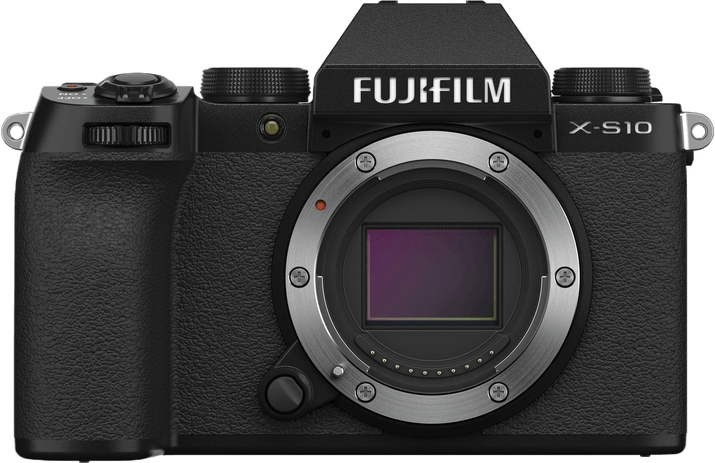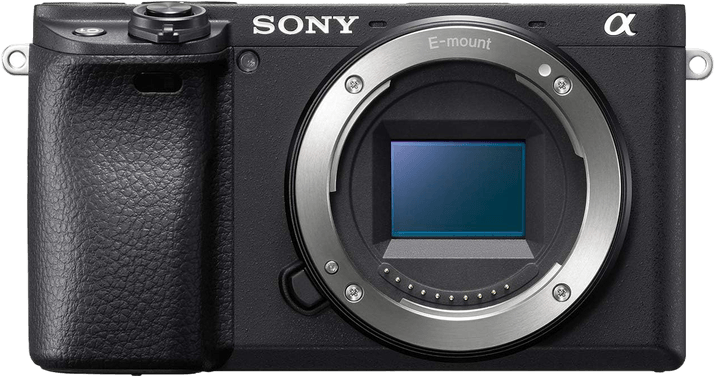Fujifilm X-S10 vs Sony a6400 Comparison
Fujifilm X-S10

Sony a6400

The Sony a6400 edges out the Fujifilm X-S10 with a score of 70/100 compared to 69/100. Both mirrorless cameras share similarities in their release years, 2019 for the a6400 and 2020 for the X-S10, and launch prices of $900 and $999 respectively.
Regarding size and weight, the Sony a6400 is smaller and lighter, measuring 120 x 67 x 60mm and weighing 403g, while the Fujifilm X-S10 measures 126 x 85 x 65mm and weighs 465g. This makes the a6400 more portable and convenient for on-the-go photography.
However, the Fujifilm X-S10 has its advantages, being a newer model with updated features. When deciding between the two cameras, consider the importance of portability versus the latest technology. Ultimately, the choice depends on the photographer’s priorities and preferences.
Fujifilm X-S10 vs Sony a6400 Overview and Optics
The Fujifilm X-S10 outperforms the Sony a6400 in optics with a score of 72/100 compared to 68/100. Both cameras share common specifications such as a CMOS sensor, an APS-C sensor size, and a similar megapixel count (26 for the X-S10 and 24.2 for the a6400). However, the X-S10 has certain advantages that contribute to its higher score.
The Fujifilm X-S10 boasts a faster shooting speed of 20 frames per second (fps), significantly higher than the a6400’s 11 fps. This allows the X-S10 to capture fast-moving subjects more effectively. Additionally, the X-S10 has a built-in image stabilization system, which helps to reduce camera shake and produce sharper images. The a6400 lacks this feature, making it less suitable for handheld shooting in low light conditions or with telephoto lenses.
On the other hand, the Sony a6400 has a DXOMARK score of 83 for its sensor, while the X-S10’s sensor does not have a DXOMARK score as DXOMARK does not evaluate Fujifilm cameras. This score indicates that the a6400’s sensor may have better performance in areas such as dynamic range and noise reduction. However, the absence of a DXOMARK score for the X-S10 makes it difficult to make a direct comparison in this regard.
Both cameras use different lens mounts, with the X-S10 using the Fujifilm X mount and the a6400 using the Sony E mount. This means that each camera has access to a different selection of lenses, and the choice between them may ultimately depend on the user’s preference for a particular lens lineup.
Considering the higher optics score and features such as faster shooting speed and image stabilization, the Fujifilm X-S10 offers superior performance. However, the Sony a6400’s sensor performance and lens options should not be overlooked, as they may still appeal to some users.
Fujifilm X-S10 vs Sony a6400 Video Performance
The Fujifilm X-S10 and the Sony a6400 are equally impressive in terms of video capabilities, both scoring 91/100. They share several common features, including a maximum video resolution of 4K and built-in time-lapse functionality. However, there are some differences that set these cameras apart, giving each its own set of advantages.
The Fujifilm X-S10 surpasses the Sony a6400 with its higher max video dimensions of 4096 x 2160, providing slightly better video quality. Additionally, the X-S10 boasts a higher max video frame rate of 240fps, which is double the a6400’s frame rate of 120fps. This allows for smoother slow-motion footage and greater flexibility in post-production.
On the other hand, the Sony a6400 is not without its merits. While it has a lower max video frame rate and dimensions compared to the X-S10, it still delivers excellent 4K video quality at 3840 x 2160 resolution. Furthermore, both cameras possess built-in time-lapse functionality, enabling users to create stunning time-lapse videos without the need for additional equipment or software.
In comparing these two cameras, it is evident that the Fujifilm X-S10 holds a slight edge in terms of video quality and frame rate. However, the Sony a6400 remains a strong contender, offering high-quality 4K video and time-lapse functionality. Ultimately, the choice between these two cameras will depend on the individual user’s preferences and requirements for their specific video projects.
Fujifilm X-S10 vs Sony a6400 Features and Benefits
The Sony a6400 outperforms the Fujifilm X-S10 in terms of features, earning a score of 81/100 compared to the X-S10’s 70/100. Both cameras share several specifications, including a 3-inch screen size, touchscreen capabilities, flip screen, absence of GPS, and Bluetooth connectivity.
The Sony a6400 surpasses the Fujifilm X-S10 in one significant aspect: WIFI connectivity. This feature allows users to transfer photos and videos to their devices effortlessly, making it more convenient for sharing and editing. This advantage contributes to the a6400’s higher feature score.
On the other hand, the Fujifilm X-S10 has a slightly higher screen resolution at 1,040,000 dots, compared to the a6400’s 921,600 dots. This difference means that the X-S10 offers a marginally clearer display for reviewing images and navigating menus. However, this advantage is not enough to compensate for the lack of WIFI connectivity in the X-S10, and thus, the Sony a6400 remains the winner in terms of features.
Considering the features of both cameras, the Sony a6400 is the superior choice due to its WIFI capabilities, which offer added convenience for users. The Fujifilm X-S10’s slightly better screen resolution does not outweigh the benefits of the a6400’s additional features. Therefore, the Sony a6400 is the better camera in this comparison.
Fujifilm X-S10 vs Sony a6400 Storage and Battery
The Sony a6400 outperforms the Fujifilm X-S10 in storage and battery with a score of 37/100 compared to 35/100. Both cameras have one memory card slot and support USB charging. They accept SD, SDHC, and SDXC memory cards, with the a6400 also compatible with Memory Stick Duo cards.
The a6400’s superior battery life of 410 shots grants it an advantage over the X-S10’s 325 shots. This extended battery life allows for more photos and videos captured on a single charge. The Fujifilm X-S10, on the other hand, does not have any significant advantages in storage and battery over the Sony a6400.
Considering these factors, the Sony a6400 proves to be the better choice for those prioritizing longer battery life and additional memory card compatibility. The Fujifilm X-S10 falls short in this comparison, but still offers adequate storage and battery performance for general use.
Fujifilm X-S10 vs Sony a6400 Alternatives
Still not ready to make a decision? Check out our other popular camera comparisons for inspiration:
